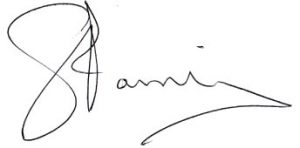Body Talk
Tri-Dosha founder Sunita Passi talks about Ayurvedic Massage Therapy, a technique that has long been practised in India.
Ayurvedic Massage Therapy and its many benefits
What you feel like when you’re happy and motivated and how it feels when you’re melancholy and lethargic are very different. That’s incredibly obvious…but not so obvious that we are inclined to do something to make us feel better, or encourage the possibility of wellbeing becoming a more regular occurrence.
Given that feelings happen in our bodies (where else?) then it makes sense that a good way to deal with them is physically. Different cultures have developed a whole range of modalities to do so, and at this stage we’re presented with a hotchpotch of possible ways forward. One fantastic advantage of the Ayurvedic approach is it’s a cohesive system that’s been part of Indian culture for centuries, and its different aspects go together in ways that will probably surprise you. The idea that diet and character and contentment go together is a popular one at this point – Ayurveda was on this track way before devotees of whatever the flavour of the month exercise system is started putting pictures of themselves on Instagram.
My grandfather was immersed in Ayurveda. I grew up shaped by Ayurveda. Professionally I’ve been training people in the methods and principles of Ayurveda for close to 15 years. Our Ayurvedic Massage Therapy course will introduce you to a range of techniques for working with people in response to their particular body type, which helps define their temperament, thinking, and choices.
You’ll be shown how to work with someone’s muscles, and deeper than that the fascia. Scientists have discovered this connective tissue in the west fairly recently – knowledge of it is implicit in what Ayurveda has offered for generations. Ayurvedic massage allows blockages to be released, and give people the possibility of moving on to a better future.
Herbal oils are an important part of Ayurvedic Massage, using plants that have specific purposes. Traditionally massages finish with steam, allowing the pores to open up and absorb oil for added impact. Again, this points to the holistic scope that Ayurveda offers – there’s a core based on practice and refinement that runs through time, presenting insights and solutions for every client to those with the right knowledge and skills, and the ability to serve those they work with. That applies to supporting people with specific conditions, or helping people more generally to connect with more of who they are, leaving a session with renewed vitality and zest for life.
The prospect of training in Ayurvedic Massage may just be an inkling for you at this point, or you might by now feel it as a full-blown calling. Whichever applies, and if you’d like to know more, please do get in touch. The future starts here.
To learn more about our 5-day Ayurvedic Massage Therapies course, head on over to: https://tri-dosha.co.uk/therapists/5-day-ayurvedic-massage-therapy/
Until next time … Namaste!
Sunita x

Founder, Tri-Dosha
tri-dosha.co.uk







